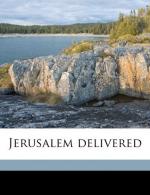|
This section contains 10,682 words (approx. 36 pages at 300 words per page) |

|
SOURCE: Ascoli, Albert Russell. “Liberating the Tomb: Difference and Death in Gerusalemme Liberata.” Annali d'Italianistica 12 (1994): 159-80.
In the following essay, Ascoli examines the fundamental importance of entombment and liberation in Gerusalemme liberata.
Like much Counter-Reformation writing, Tasso's epic of the Crusaders' conquest of Jerusalem represents and then represses several varieties of threatening difference—religious, sexual, racial, psychological, even textual. In his fundamental study of the Liberata, Sergio Zatti (1983) has shown that the struggle of the “uniforme cristiano” to overcome the “multiforme pagano,” that is, the heterodox multiplicity of the Islamic “other,” can be read as an overt allegory of internal difference and otherness. Zatti identifies several strata of internal “difference” and deviation—the tensions within the Christian camp itself (the “compagni erranti” of Goffredo di Buglione, whom one might be tempted to read as so many protestant schismatics [see Quint 1990 & 1993]); the tensions within individual characters such as Rinaldo...
|
This section contains 10,682 words (approx. 36 pages at 300 words per page) |

|


